So long Jaguar F-Type, auf wiedersehen Audi TT
Which one should you drive into the sunset?

Perhaps reports proclaiming the death of the sports car are greatly exaggerated. There is still a Porsche 911 and a Mazda MX-5, after all - and you can still buy a Lotus Emira or an Alpine A110. For a while at least. But when Porsche calls time on the 718, the perennial winner of a thousand group tests and the gooey centre of so many private garages, you do wonder how much longer it will be before the writing is irrefutably on the wall.
The Audi TT and Jaguar F-Type are generally less revered. Ultimately that’s a symptom of their shortcomings on the comparative scale by which enthusiasts like to measure things, but it does not reflect their respective sales volume nor the excitement they originally generated. The TT can lay claim to being among the most influential car designs of the past 25 years. In the late ‘90s, it's possible only the first Ford Focus rivalled its impact on the general public. Both pointed to a brave new millennium like a beacon.
Lest we forget, the F-Type was also shown first shown as a concept shortly afterwards. But the to-die-for two-seat speedster Jaguar revealed in 2000 was relegated to eye candy for Detroit Auto Show goers that year; it would be another decade before the firm had a proper go with the C-X16. Even hemmed in by Frankfurt show stages that included the BMW i3 and i8, the Alfa 4C and the Land Rover DC100 (the distant forerunner to the current Defender) this version was greeted with so much enthusiasm that the later production version looked virtually the same.
Of course, underneath, neither the F-Type nor the Audi TT were ever considered showstoppers. The whole point of the latter was to take additional advantage of the VW Group’s ubiquitous and long-running A platform series, starting with the PQ34 iteration it shared with the original A3. This made the TT dependable, swift and vaguely practical, but also dynamically inert. The first F-Type, while assuredly rear-drive and possessing large, longitudinally-mounted engines, had to make do with all-aluminium underpinnings that could trace their origins back to the previous decade before the architecture was trimmed to accommodate a shorter body than had featured on the XK.


Predictably, this became more of an issue as time passed. Initially, the F-Type was well-received, its hairy-chested handling and burly soundtrack living up to most people’s idea of a raked, long-nosed Jaguar. But most people were spared the revelation of driving it back-to-back with the concurrent 991, which was custom-built (not just of aluminium, but high-strength steel and some composite, too) to take the Porsche 911 into a new century. It had a fleetness and alluring sense of sophistication that, try as it might, the F-Type never threatened to overhaul.
Nevertheless, the two-seater, which expanded to include AWD variants in 2016 and was facelifted in 2019, exits stage left with considerable credit in the perception bank. It still looks terrific, for one thing. True, it has been treated to a nip and tuck to keep it fresh, but in resolutely sober Carpathian Grey on 20-inch wheels, the passage of time hardly shows on the underlying bone structure; it looked good ten years ago, no reason to think it won’t look good ten years hence. Even the fixed spoiler that features on this, the run-out R 75 version - which smacks of stuck-on redundancy - starts to grow on you.
The run-out Audi TT has a rear spoiler that I like less. Spoilers have always been an issue for the TT, from it needing one to pop up to help save stupid people, to RS variants requiring them for differentiation. This isn’t an RS, it’s the TTS Final Edition, and the first cat to set among the PH pigeons is that the TTS has always been the better car. Not as fast, obviously, or as nice to listen to, or as visually combustible, or as dynamically thrusting. But better. And that’s simply because it feels like a more cohesive sports car with a bit less power and a bit more give in the suspension. It’s more true to the TT's underlying nature.
The second cat, perhaps larger and more predictable, is needed to underline just how much better the TT became during its long lifetime. Unlike the F-Type, the model benefitted from the VW Group’s obsession with architectural advancement; it transitioned from PQ34 to PQ35, and then from PQ35 to MQB. It was technically enhanced each time. Case in point: the dim memory of the last convertible TT I drove must be at least a decade old, and it was plainly forgettable enough for me to park it alongside a host of other shivery open-top cars I’d never, ever buy. But the Final Edition barely acknowledges its structural deficiency. Unless steered into a ravine, its scuttle shakes for no intrusion.


If it weren’t for the interior, you might think it had been launched last week. But you’ll know it wasn’t because rather than it being an ergonomic pig’s ear with big screen TV plonked on top, the interior is a bloody triumph. The Mk3 was always considered top-notch, of course, yet to return to it in 2024 is to reacquaint yourself with Audi at its chiselled peak. Sure, the instrument cluster-based infotainment display got some flak back in the day, but after a thousand disappointing touchscreens, it seems as natty to use now as a Nokia 5210.
Somewhat inevitably, that’s chiefly because there are actual real-life buttons to push. And what buttons they are, as clicky and smooth to the touch as casino chips. Talk about a tonic: I must’ve adjusted the temperature on the oversized vents about 1,700 times just for the pleasure (the simplicity! the obviousness!) of turning the dial. Moreover, in the light of subsequent models (i.e. practically everything else in the current Audi range) the full-size gear lever almost seems like a monolith to pleasure; sufficiently pleasing to the touch that I almost forgave Audi’s tedious preference for getting the sequential shift back to front.
No self-respecting Jaguar would ever make such an elemental mistake. But that doesn’t mean the F-Type’s cabin is quite so easy to love. Partly that’s because it was never comprehensively modernised to the same extent or was as good-looking in the first place; partly it’s because the now ancient touchscreen is liable to drive you up the wall. Its switchgear is still easy to like though - not least the fusillade button for the exhaust and the shortcut for dialling back the stability control - and I’m weirdly fond of the grab handle sprouting from the centre console. But to really get on board with the F-Type, you do need to fixate on that joystick-style gear lever.
This is important because, unlike the TT, it provides you with a magic wand to wave over the supercharged cauldron under the bonnet. The F-Type was available with other engines, of course, some of them very worthy indeed, but if future generations are minded to return to Jaguar’s last combustion sports car, it will surely be to experience the AJ133 5.0-litre V8 in all its blustery, profligate glory. If the TT doesn’t necessarily need five cylinders to show you what it’s made of, the F-Type categorically requires eight to have you fall properly under its spell.


Quite how many horsepower they need to produce is open to debate. We’re inclined to think the P450 might be the sweet spot, although at no point did I bear a grudge against the additional 125hp available to the R 75. Either way, the V8 acts as both focal point and band-aid; any misgivings you have about the F-Type’s jangly slow-speed ride or the occasionally wanting body control are quashed by the sound and fury of petrol being relentlessly turned into euphoria. On paper, the V8 can’t supply all its 516lb ft of torque as instantly as a commensurate turbocharged unit would - but in reality it seems to come at you from all angles with its excitable throttle response, and builds momentum like an avalanche.
Even now, there are few more pleasurable ways of going from dawdle to outright delinquency. Truthfully, while we're not comparing eggs with egss here, the TT, being so much smaller and lighter and structurally stiffer, is easier to drive aggressively. The steering isn’t nearly as dialled in even in its sportier mode, and there’s precious little sense of the chassis being adjustable or overtly playful - yet if you like the feeling of tyres being worked (and your neck with them) it will oblige endlessly and effortlessly. It's also a useful foil for the Jaguar on this occasion because it doesn’t depend so heavily on its engine for virtue signalling; in the Final Edition, the salient pleasure of the industrious 320hp four-pot is how well matched it is to the chassis. One is sugar, the other butter. They were made for each another.
We’ve droned on about the F-Type’s V8 as a point of difference for years, and doing so always slightly undersells the F-Type more generally. This is still a very able and senior coupe. You enjoy a much more satisfying relationship with the front end than the perfunctory TT ever summons up, and - unsurprisingly, given its heritage - it has a much more confident grasp on how a sports car should make you feel. In spite of its driven front axle, the F-Type is never less than adamant that its power should be felt at your back - even when it's furtively sending some of it forward to save you from yourself.
But it’s impossible now, with the curtain closing, not to get wistful about the things we’re going to miss. Indeed, that’s why we’re here. One last pointless cock about with two old souls. Neither, truthfully, seems quite ready for history’s scrap heap. Both feature timeworn technology, but compensate for it with better usability. Neither car tries to steer for you or beep incessantly. They both still look the part. They live up to their respective reputations, in form and function. And, most importantly, they speak poignantly to a time when we knew exactly what to expect from vaguely attainable sports cars.


We imagined the tenuous point of driving them back-to-back would be to judge which of the run-out editions is most deserving of a place in our (imaginary) time capsule garage. But having spent a few reflective days in the company of both, any one-way verdict seems frivolous when set against the depressing fact of either car’s departure: both are very good at being themselves - and yet neither warranted a direct replacement or even a stay of execution. This is a bit like being told there will be no more guitar riffs after Jimmy Page and Keith Richards have passed away.
Obviously we have the used market to cling to, and there’s plenty of succour in the classifieds on either side. The Final Edition is north of £50k, but you’ll pay a lot less than £40k for lightly used TTS, which, thanks to Audi’s diligence and its chirpy engine, will likely feel assertive and persuasively pragmatic for years to come. The once climactic question of its missing X factor seems redundant in the face of inescapable electrification. Go for a drive in 2030 and see how fun it feels.
In the Jaguar, there’s no need to wait that long. The R 75 is predictably expensive, but you can slash at least £30k off that figure by seeking out a nearly new P450. It will be charmingly imperfect from day one and will age more quickly than the TT. Thanks to the V8, it already seems like a throwback; imagine getting to grips with its louche, muscle car mindset when everything else is hybridised and sanitised and sensible. By then the mercurial F-Type will seem even less incisive than it does now, yet it will still part the clouds like a mood enhancer because the things that are truly great about it are marrow-deep and measured in throttle pedal travel. Press down for blessed relief.
SPECIFICATION | JAGUAR F-TYPE R 75 Coupe Plus
Engine: 5,000cc, V8, supercharged
Transmission: 8-speed auto, four-wheel drive
Power (hp): 575@6,500rpm
Torque (lb ft): 516@3,500-5,000rpm
0-62mph: 3.7secs
Top speed: 186mph
Weight: 1,780kg (DIN)
MPG: 27 (WLTP)
CO2: 239g/km
Price: £109,360 (incl. £475 for Carpathian Grey)
SPECIFICATION | AUDI TTS Roadster Final Edition
Engine: 1,984cc, four-cylinder, turbocharged
Transmission: 7-speed DSG, four-wheel drive
Power (hp): 320@5,600-6,500rpm
Torque (lb ft): 295@2,000-5,600rpm
0-62mph: 4.8secs
Top speed: 155mph
Weight: 1,510kg (DIN)
MPG: 32.8 (WLTP)
CO2: 194g/km
Price: £51,425 (incl. £575 for Tango Red)


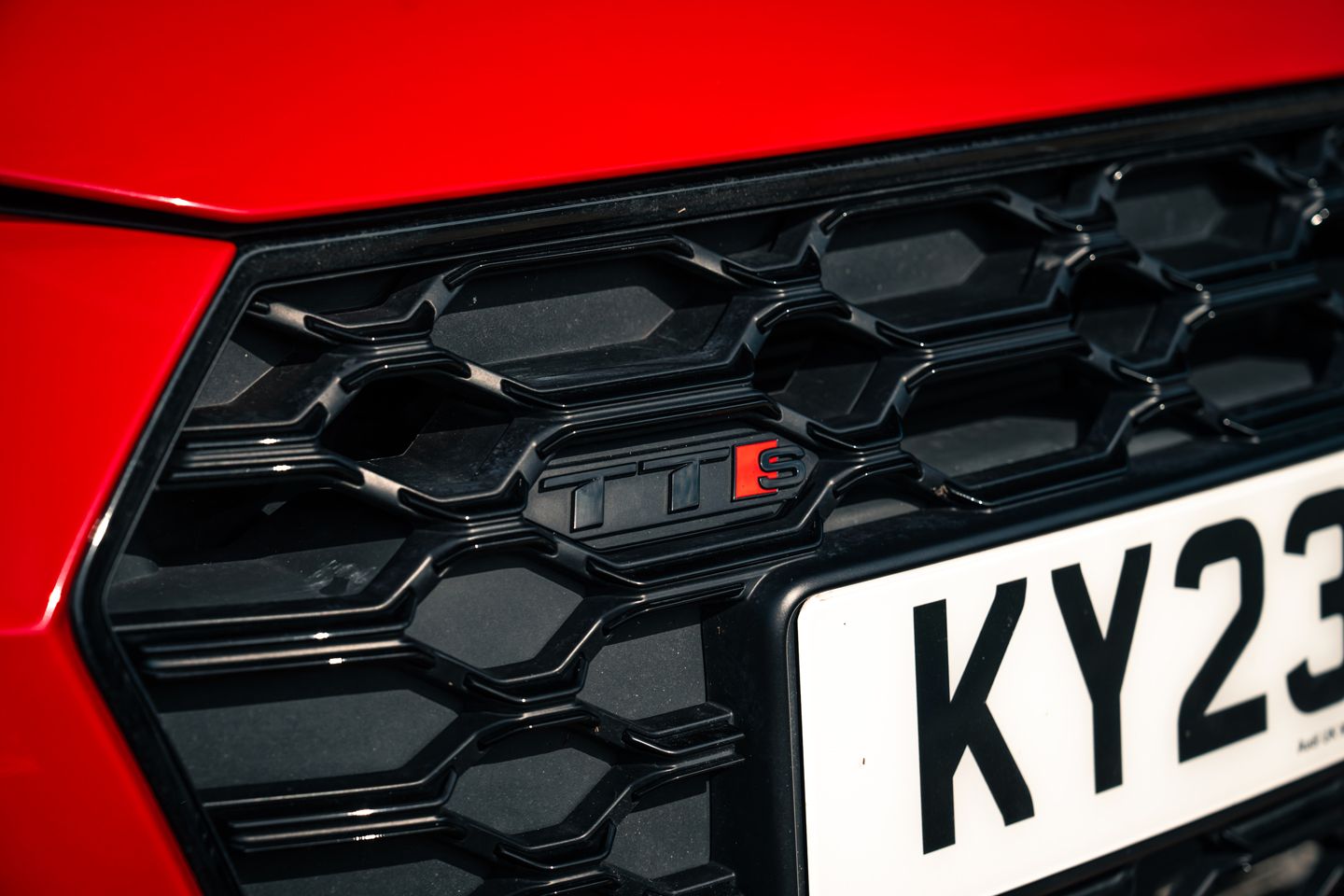
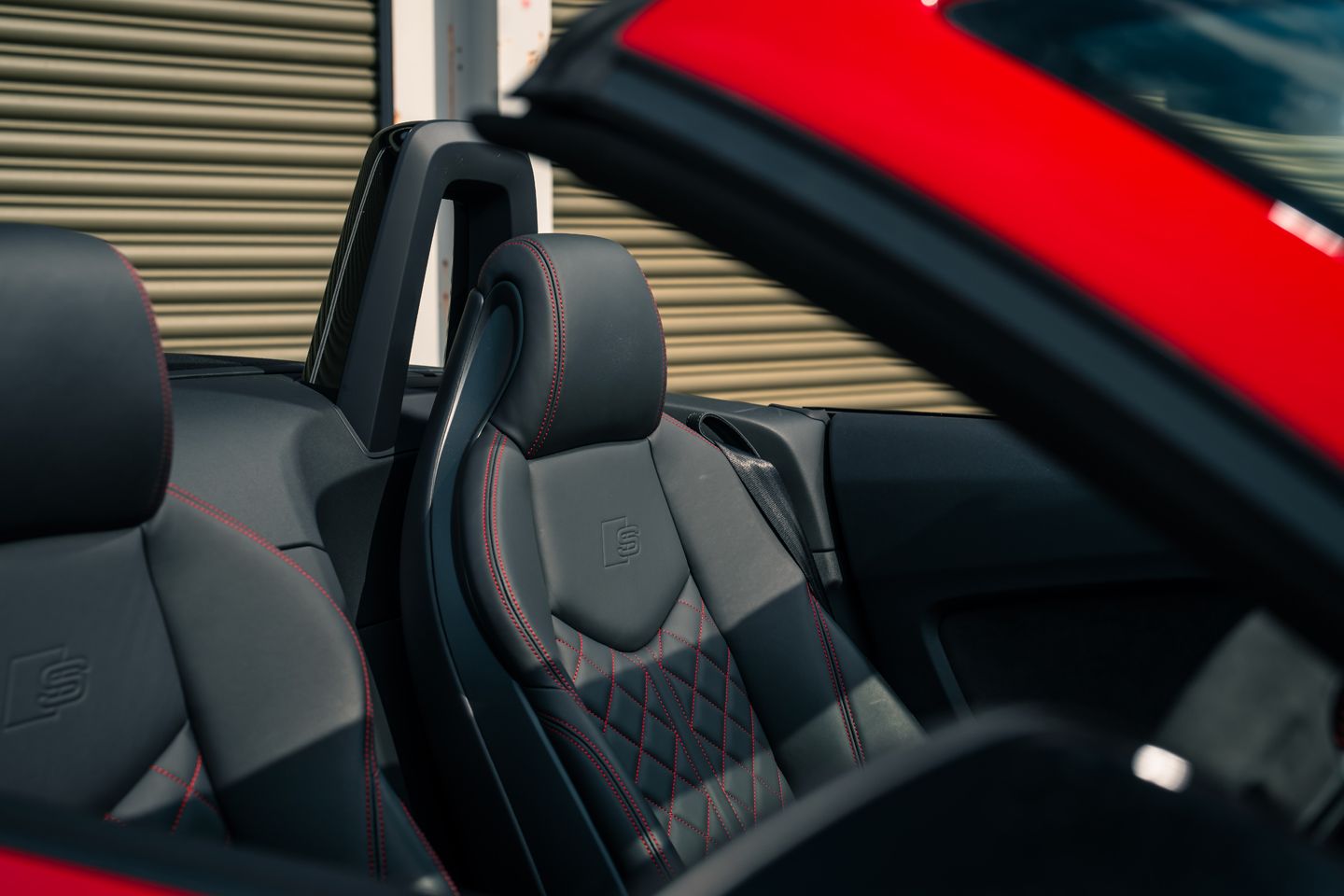

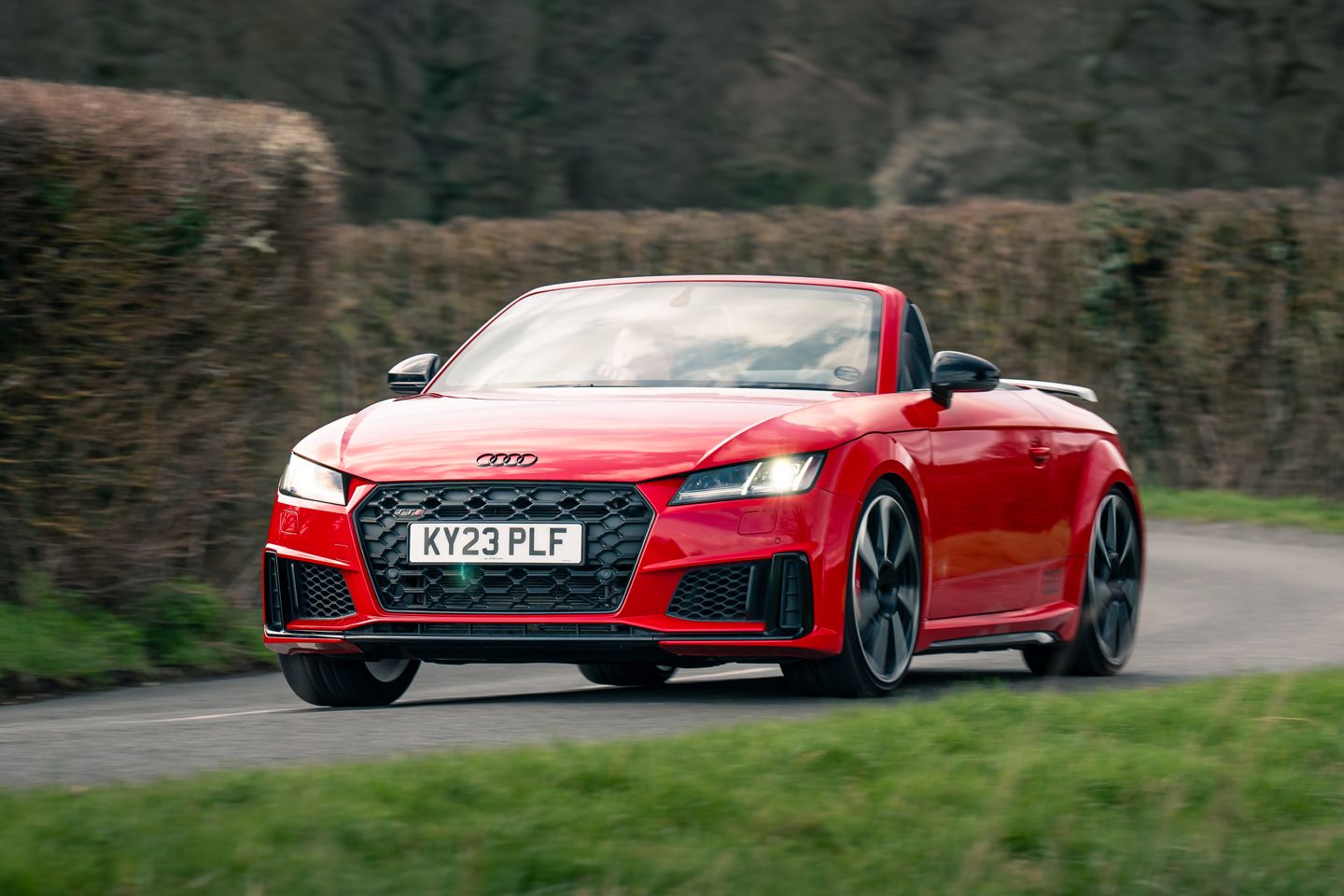
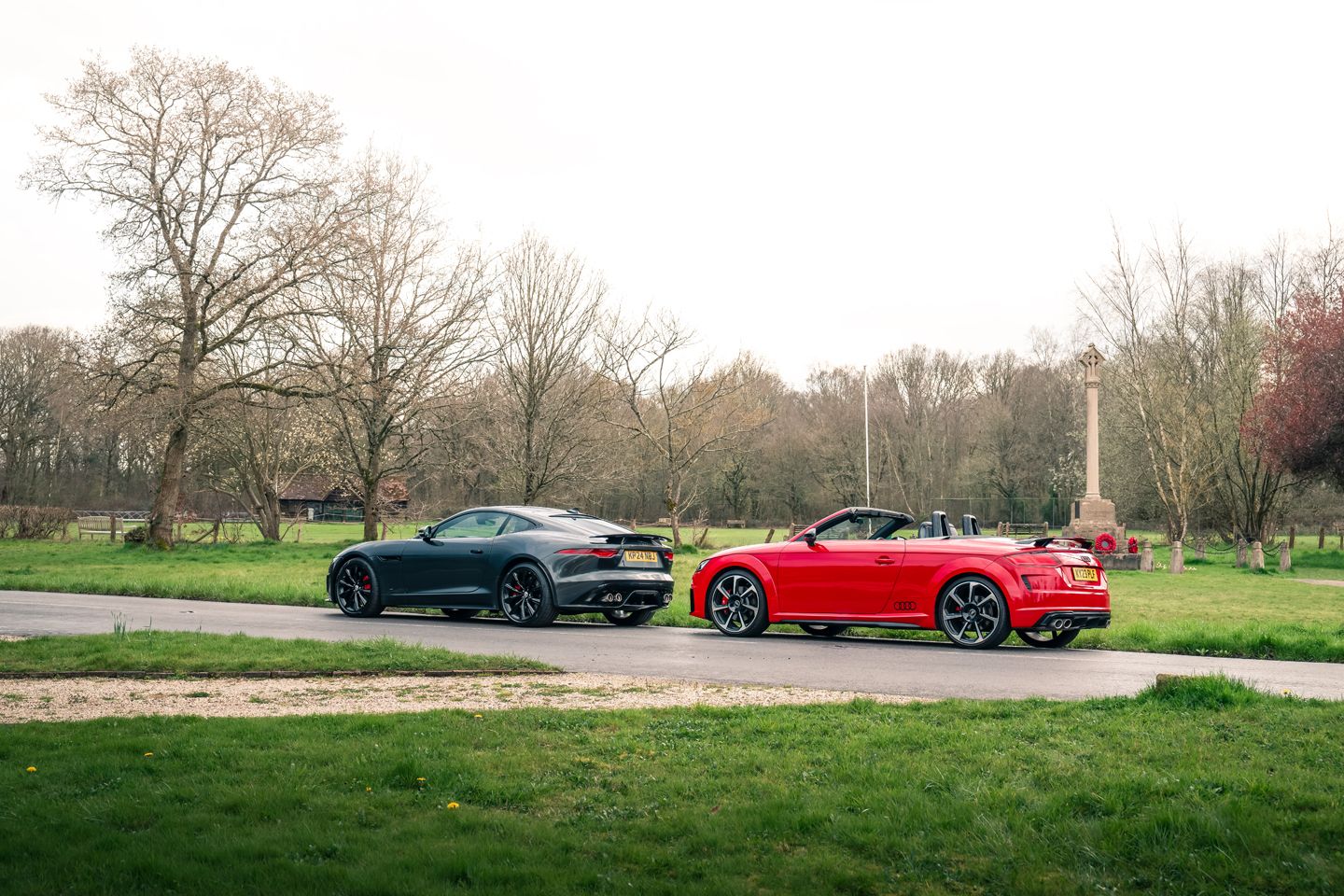
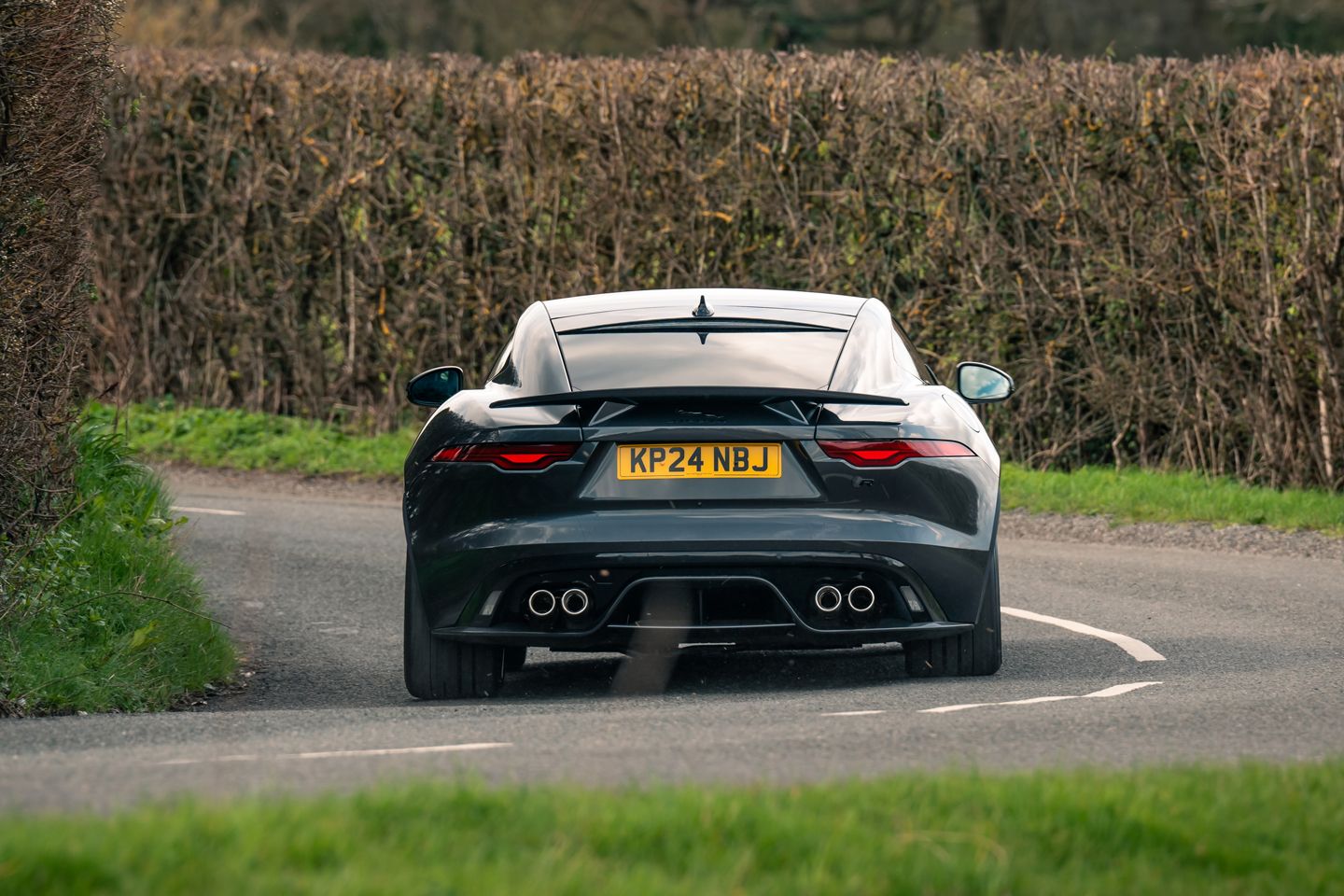
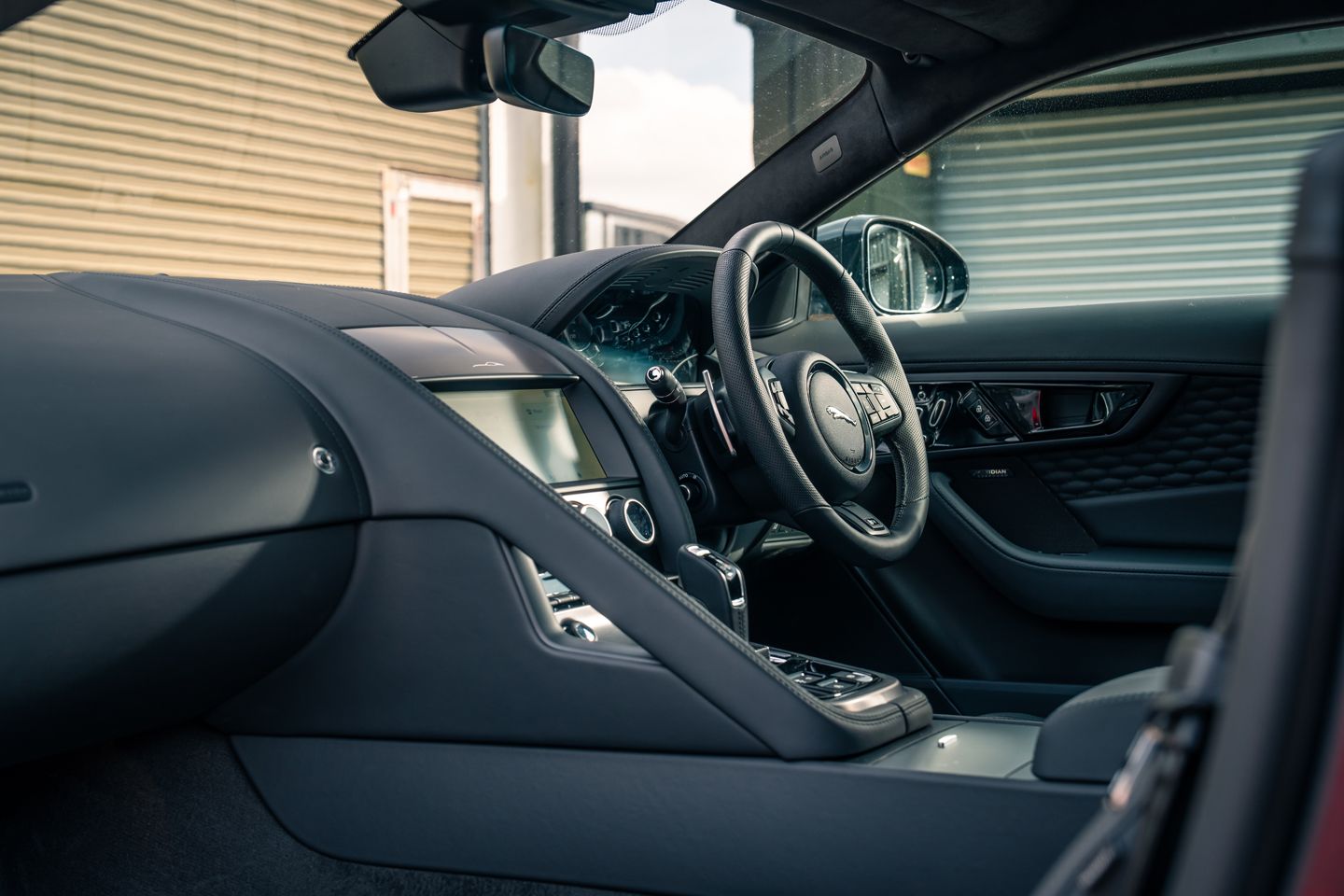
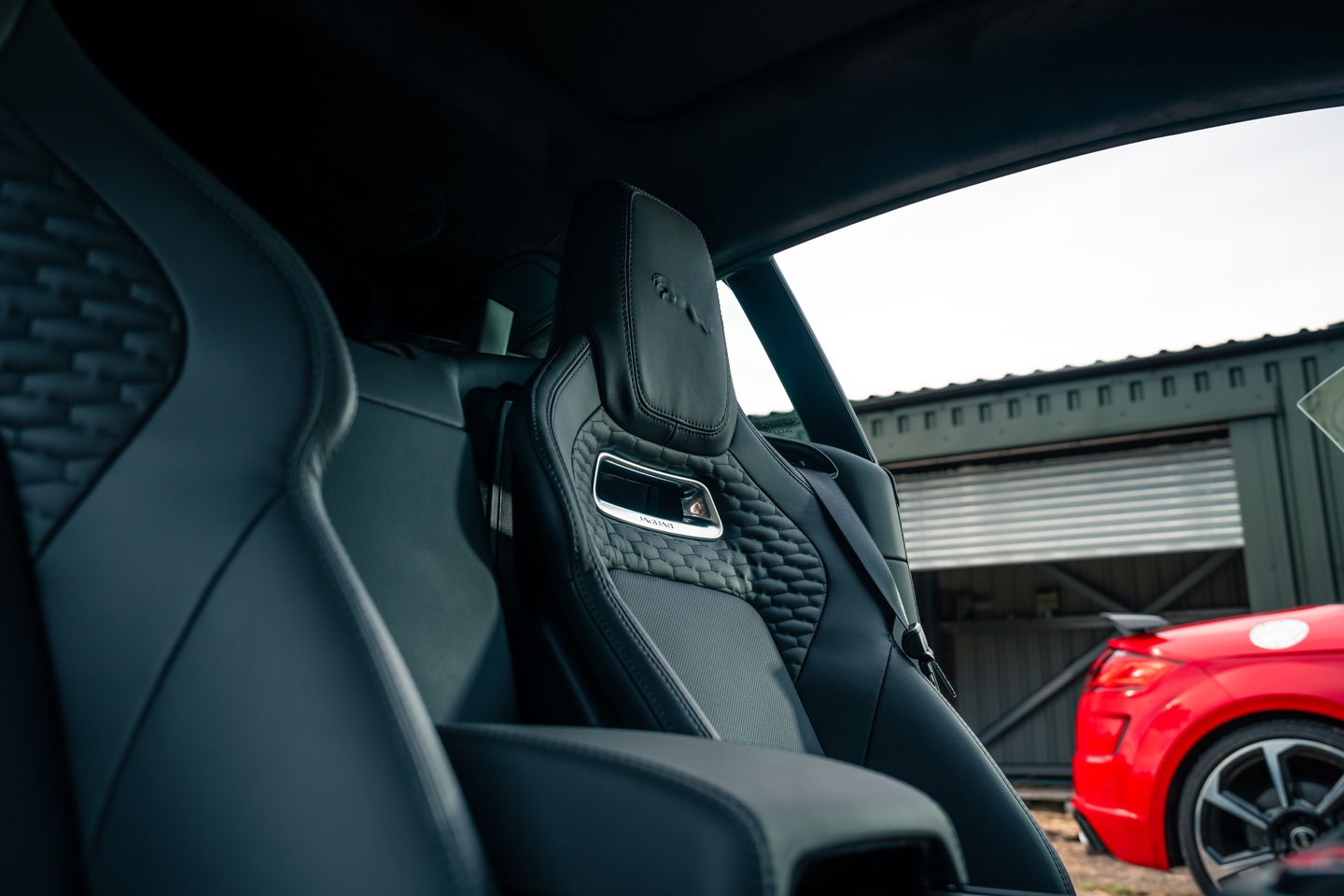
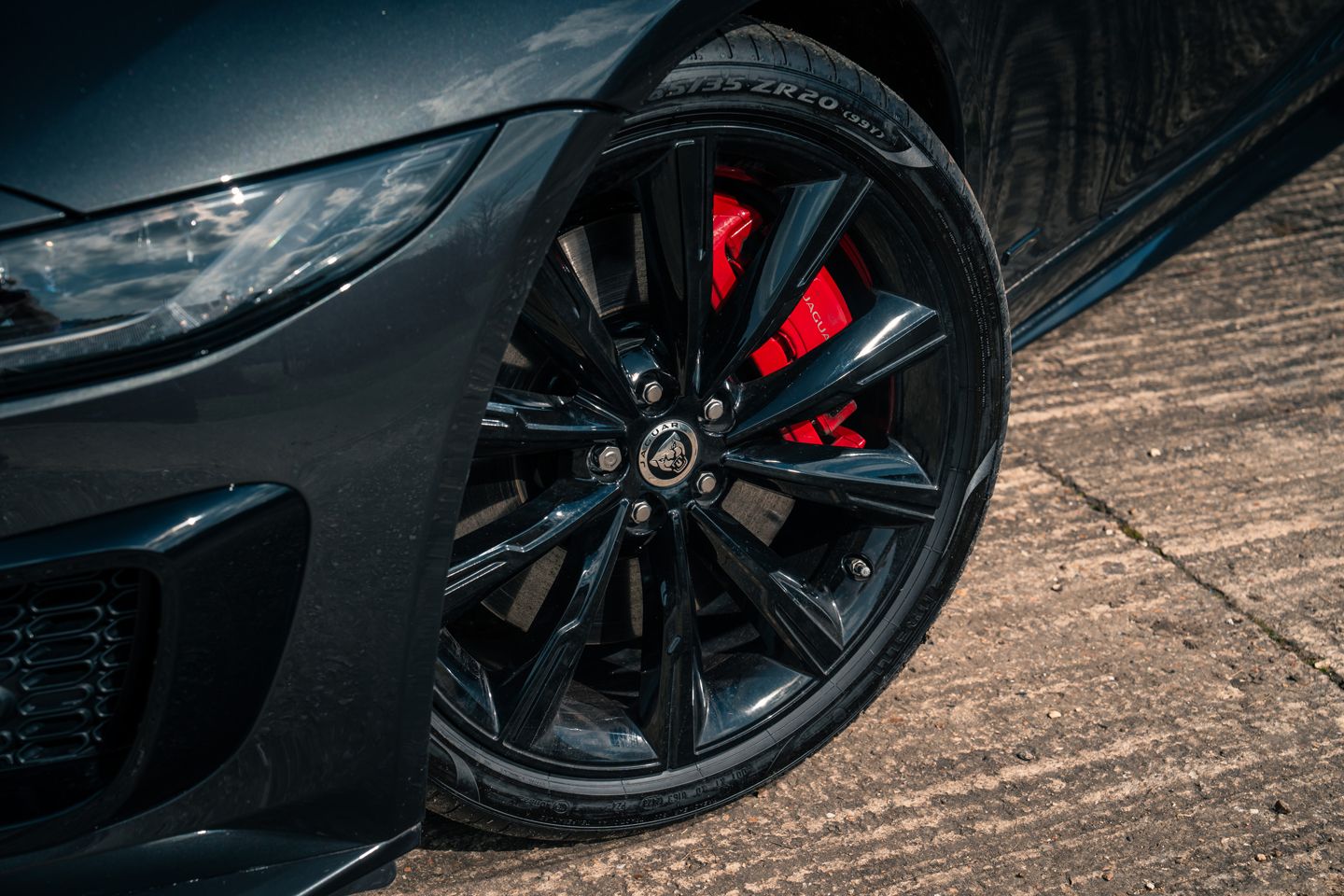
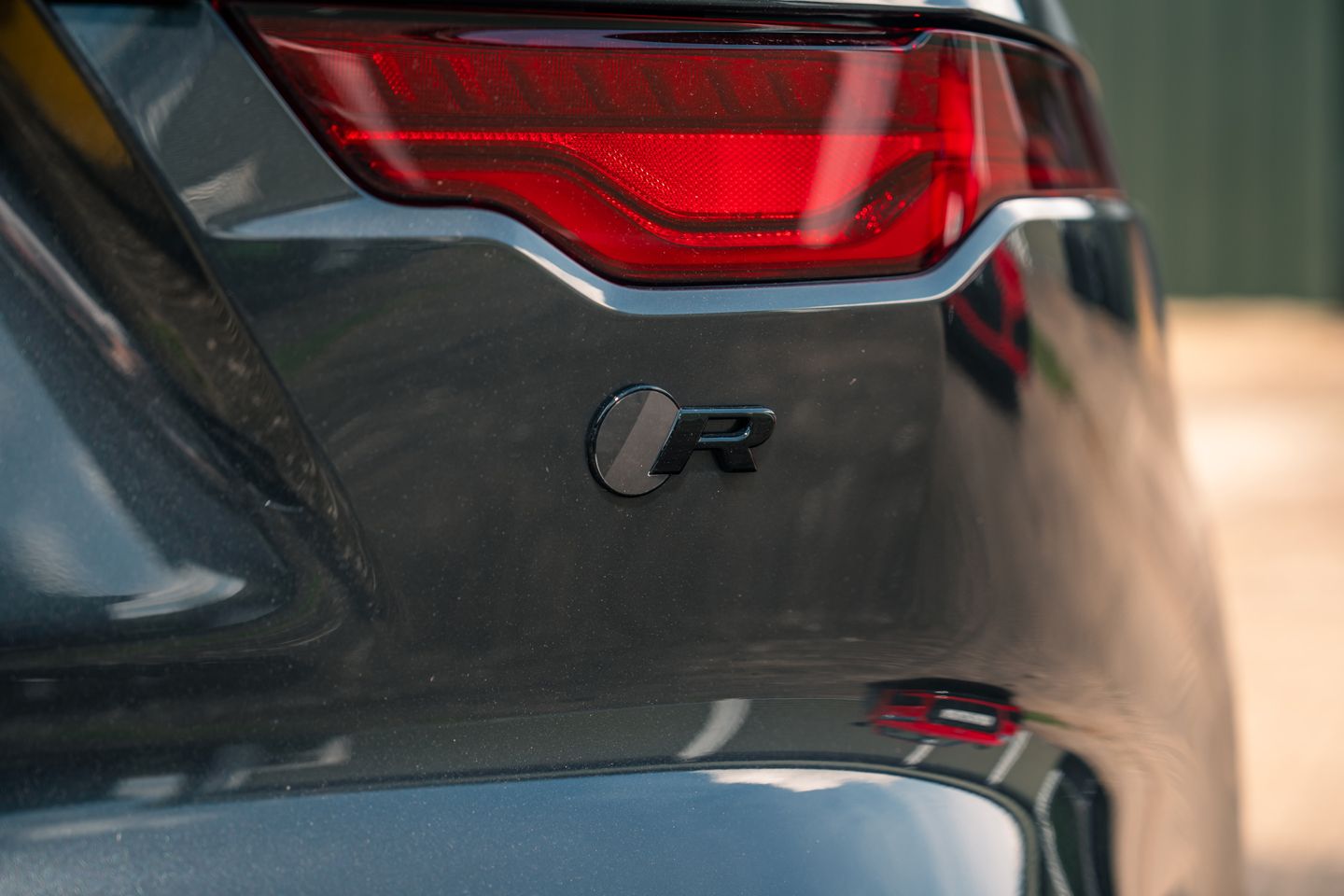
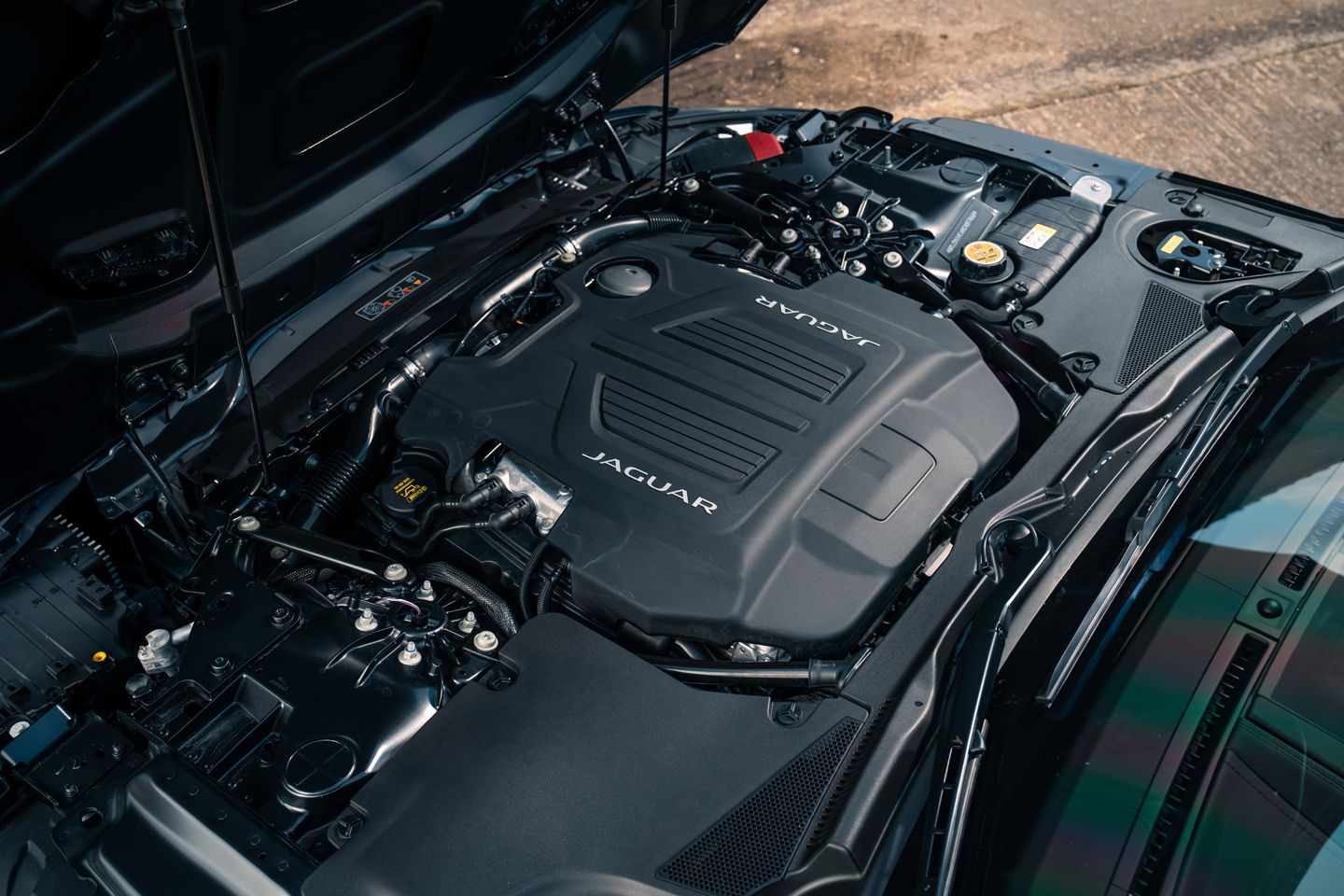
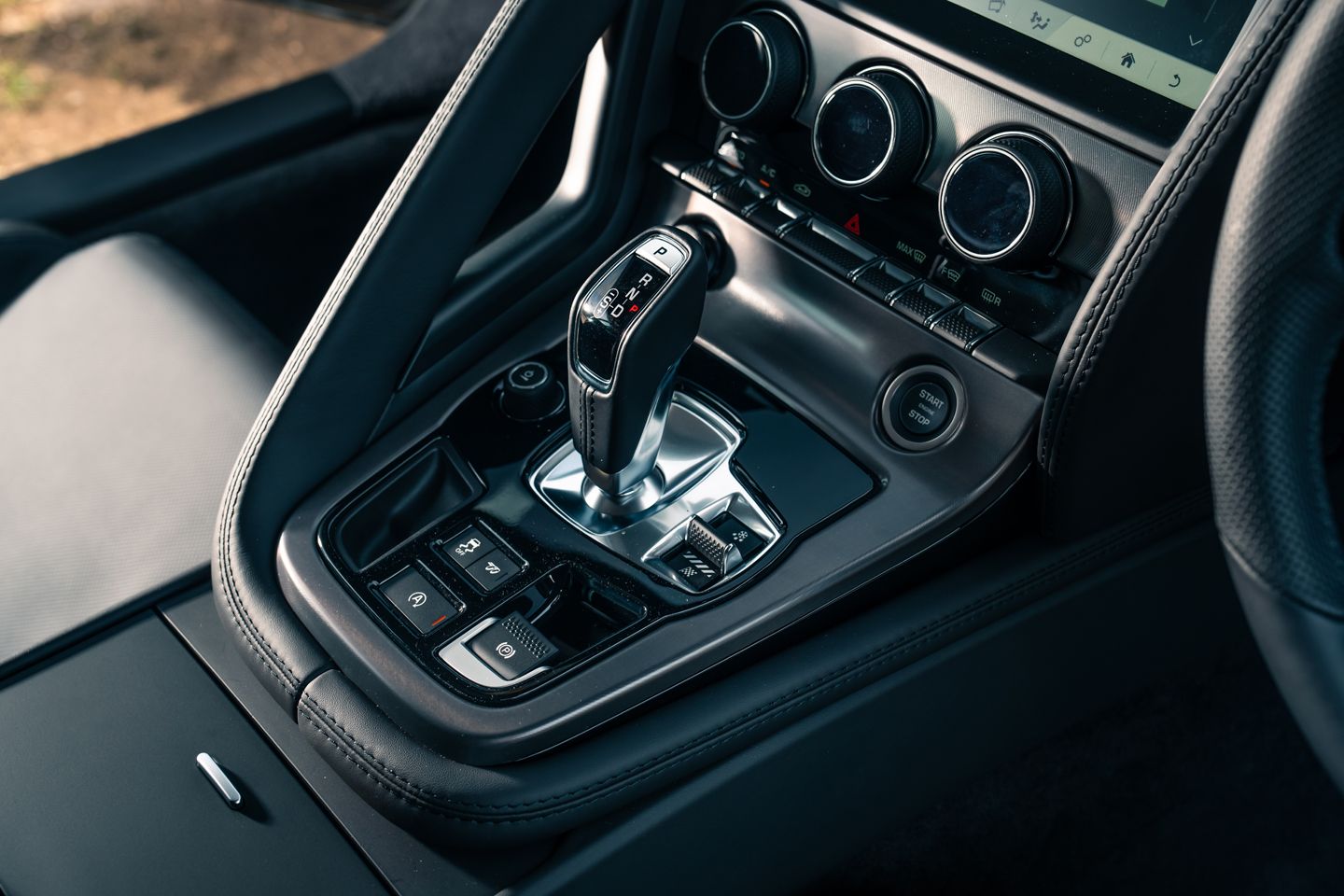
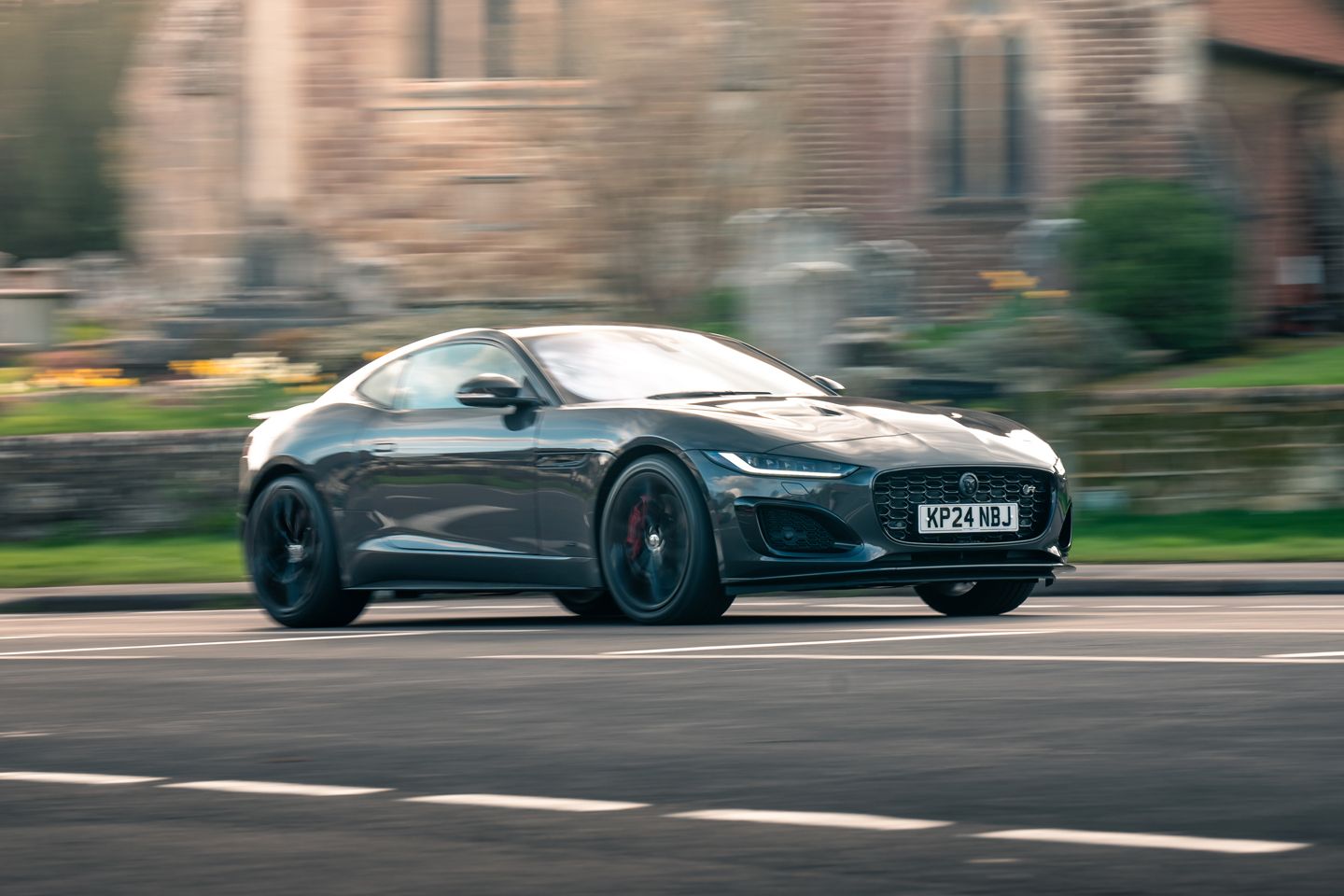
Gassing Station | General Gassing | Top of Page | What's New | My Stuff



